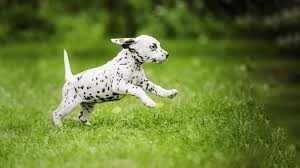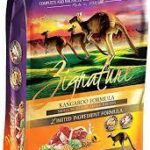
Some owners of a new puppy might not have had a puppy in many years, or it might be their first puppy, and veterinary recommendations about nutrition and exercise for the puppy’s best long-term health can change over the years. With the proliferation of large breed-specific and all-life-stage diets, it’s sometimes difficult to know what is marketing hype from pet food manufacturers, what level of exercise is safe, and what the veterinary community recommends. The choices can impact the puppy’s health in years to come, so it’s best to understand the recommendations so you can make an informed choice.
First and foremost, talk to your veterinarian with any questions about your puppy. Your veterinarian is likely to become your puppy’s health-care specialist for years to come, and getting to know you and your puppy is important.
Nutrition
Q: What are the recommendations of veterinary nutritionists for switching pups and growing dogs onto adult maintenance diets?
A: Dietary requirements of puppies differ from those of adult dogs. Mostly, they have different requirements for amino acids and for vitamins and minerals, especially calcium and phosphorus, which are required for bone growth, and Of course, puppies also have a higher calorie requirement than adult dogs of a similar size — pups simply burn more energy!
The standard recommendations are to feed a diet with a Nutritional Adequacy Statement indicating that it is appropriate for growing puppies or for all life stages (this information is required to be on the label); if the complete and balanced claim was substantiated by the formulation method, the statement will also indicate if the diet is adequate or not for puppies expected to be > 70 lb adults. Diets that have successfully passed feeding trials as indicated by the Nutritional Adequacy Statement will not include the breed size distinction.
Regardless, an appropriate diet for growth should be fed until the dog reaches approximately 80% of the anticipated adult size. This generally occurs by 6-8 months for small-breed dogs, 8-10 months for medium breed dogs, all the way up to 18-24 months for giant-breed dogs (Great Danes, Mastiffs etc.) Current conventional recommendations are to feed growth diets until this time, but feeding such a diet for a longer period will not be harmful. But remember, after spaying or neutering, your dog’s metabolism and need for excess protein, vitamin, minerals and calories decreases and growth diets may be fairly energy dense and could contribute to unwanted weight gain.
Q: Is it necessary to feed puppies “puppy food” and adult dogs “adult maintenance food?”
A: Yes – puppies have distinct nutritional needs. However, checking the Nutritional Adequacy Statement on the label is the best way to determine if the diet is appropriate for the specified life stage. Some foods marketed as maintenance diets based on the name or other front panel information are appropriate for “all life stages” as specified by the Nutritional Adequacy Statement on the back or side of the package.
Q: What is the difference between “regular” and “large-breed” growth diets? A: The major differences between regular and large-breed growth diets are the energy density and calcium content. Large-breed growth diets are typically lower in calcium and are less energy dense in order to reduce the risk of overfeeding, which will lead to obesity – an all-too-common problem in today’s pets. Being overweight is an important risk factor for developmental orthopedic disease. In most cases, nutritionists recommend a food that has passed the Association of American Feed Control Officials (AAFCO) feeding trials for growth that is made by a reputable pet-food company and marketed specifically for large-breed or giant-breed growth, or that has a Nutritional Adequacy Statement indicating that the diet is formulated for puppies expected to be less than 70 lb adults. All puppies should be kept lean throughout growth and beyond to promote health and longevity.

Q: Can I harm my puppy by feeding an adult diet earlier than recommended? I need to limit calories by switching my giant-breed dog over to adult food at 6 months of age to reduce the growth rate.
A: Puppies require growth diets to meet their needs. The broad category of “adult” diets encompasses a wide range of energy densities and nutrient profiles, so this advice is too vague to be useful and may be harmful.
There are two specific reasons why this approach is not recommended. The first is that adult diets often have calcium-phosphorus ratios, or absolute amounts of these minerals (as well as other essential nutrients), that are inappropriate for growing giant-breed dogs. This can affect bone development in these breeds, who are still undergoing rapid growth at 6 months and beyond.
The second reason is that diets marketed as adult foods may be as (or more!) energy-dense as those marketed as puppy diets, especially if they are formulated to meet AAFCO nutrient profiles for all life stages (which is the same as growth/gestation/lactation formulations). It is best to simply control the calories consumed by regularly assessing the puppy’s body condition and appropriately adjusting the amount fed to maintain leanness.
The recommendation to switch to adult foods at 6 months of age, or to use adult foods for large and giant breed puppies, is outdated and potentially very harmful. Large-breed growth diets, which have been specifically created to help reduce overfeeding as well as meet the requirements of growing large-breed dogs, should be used.
Q: How can I limit calorie intake in my growing giant-breed puppy to reduce the growth rate?
A: The easiest way is to adjust the amount of the growth diet. The correct amount of food is the amount that allows the growing dog to maintain a lean body condition score of 4/9 based on the guide originally developed by Purina. Learn to assess your puppy’s body condition score (BCS) regularly and adjust the amount fed accordingly. This ensures that nutritional requirements are met but that growth is controlled to reduce the risk of developmental orthopedic disease. Not only do calorie needs change throughout growth, but growth rates and energy needs also vary between individual dogs, even siblings, so it’s best to choose a starting point and then adjust the diet to an individual puppy based on BCS.
Q: What should I do if my puppy already has developmental orthopedic disease?
A: If you are concerned your puppy has developmental orthopedic disease, the diet should be carefully evaluated and adjusted if necessary. Your veterinarian will be able to help confirm or allay your concerns, and can consult or recommend a consultation with a board-certified veterinary nutritionist for advice if necessary. Your veterinarian is also best able to help correct the orthopedic problem.
Q: What should I do if my puppy is overweight or obese?
A: Feed slightly less and increase low-impact activity such as swimming or leash walking. In most cases, reducing calorie intake while continuing to feed the large-breed growth diet should allow the dog to return to a normal body condition while maintaining appropriate balances of other nutrients. Specifically designed weight-loss diets are generally only recommended for adult dogs. If severe calorie restriction is necessary, this should be done in consultation with a board-certified veterinary nutritionist or your veterinarian. For these reasons, prevention is preferred.
Q: Are there any home-made diets that I can give to my large-breed puppy?
A: Not if you are looking for an off-the-shelf or out-of-the-book home-made diet. There is too much potential for error in estimating calcium and phosphorus as well as other essential nutrients. Several studies have shown that general recipes found in books or online are nutritionally inadequate which may result in potentially severe orthopedic disease and permanent disfigurement when fed during growth. In addition, home-made diets are more expensive compared to commercial options, and require significant investments in time, effort, and space. If you are serious about feeding a balanced and appropriate home-made diet, consult with a board-certified veterinary nutritionist to formulate a customized recipe for your specific pet. Using a generic diet recipe is a recipe for disaster!
Exercise

A: There are no hard and fast rules for exercising growing large-breed puppies. And there is even less scientific data supporting specific exercise loads in growing dogs. Therefore, common sense should prevail.Q: I want to take my large-breed puppy jogging or running. When is it safe for the puppy to go running?
Most young dogs (5-12 months) have enough energy to keep up with a person jogging, but not enough brains to know when to stop, so they would just keep going until they dropped – they’re like teenagers! Running and jogging is forced exercise for dogs; forced exercise is anything beyond what the puppy would do when playing with dogs of the same age.
Unfortunately, the stresses that forced exercise places on a growing and immature skeletal system may result in long-term damage. Dogs with a predisposition to osteochondritis dessicans or hip dysplasia who are restricted in their level of exercise during development have less severe issues than those given unlimited exercise. Since many of the larger breeds suffer from these joint diseases, it seems prudent to wait until growth plates close before subjecting them to vigorous or forced exercise.
In most of these breeds, the growth plates close around 12 months. Waiting until these dogs are 12-15 months old, which allows adequate skeletal development, will allow you to enjoy many more years of exercising with your dog than you would if you allow risky activities such as excessive running and jumping.
One reasonable analogy is that a 5 to 6 month old dog is biologically equivalent to an 8 to 12 year-old child (i.e., a pre-pubescent). It is unreasonable to expect an 8-year-old child to run 3 to 5 miles per day with an adult at a pace of 8 minutes per mile. Another similar analogy is the horse industry, which races 2-year old horses. The risk of carpal and other injuries in horses forced to gallop as 2-year olds is substantially higher than in 3-year olds because of immature growth plates and cartilage.
Q: What exercise is appropriate for my growing large-breed puppy?
A: Puppies and growing dogs should not be forced to exercise. Remember, forced exercise is anything beyond what the puppy would do when playing with dogs of the same age. Thus, a 4-month-old dog running fences with adult dogs would be considered forced exercise. Similarly, running with people is forced exercise, as is excessive stick-chasing or disc catching. Swimming, however, is not stressful on joints or bones, so dogs can be physically conditioned by appropriate and supervised swimming sessions. Also, remember that mental effort is very rewarding to a puppy and can be tiring as well – allowing exploration by scent and of course training are good ways to enrich and entertain your puppy.


